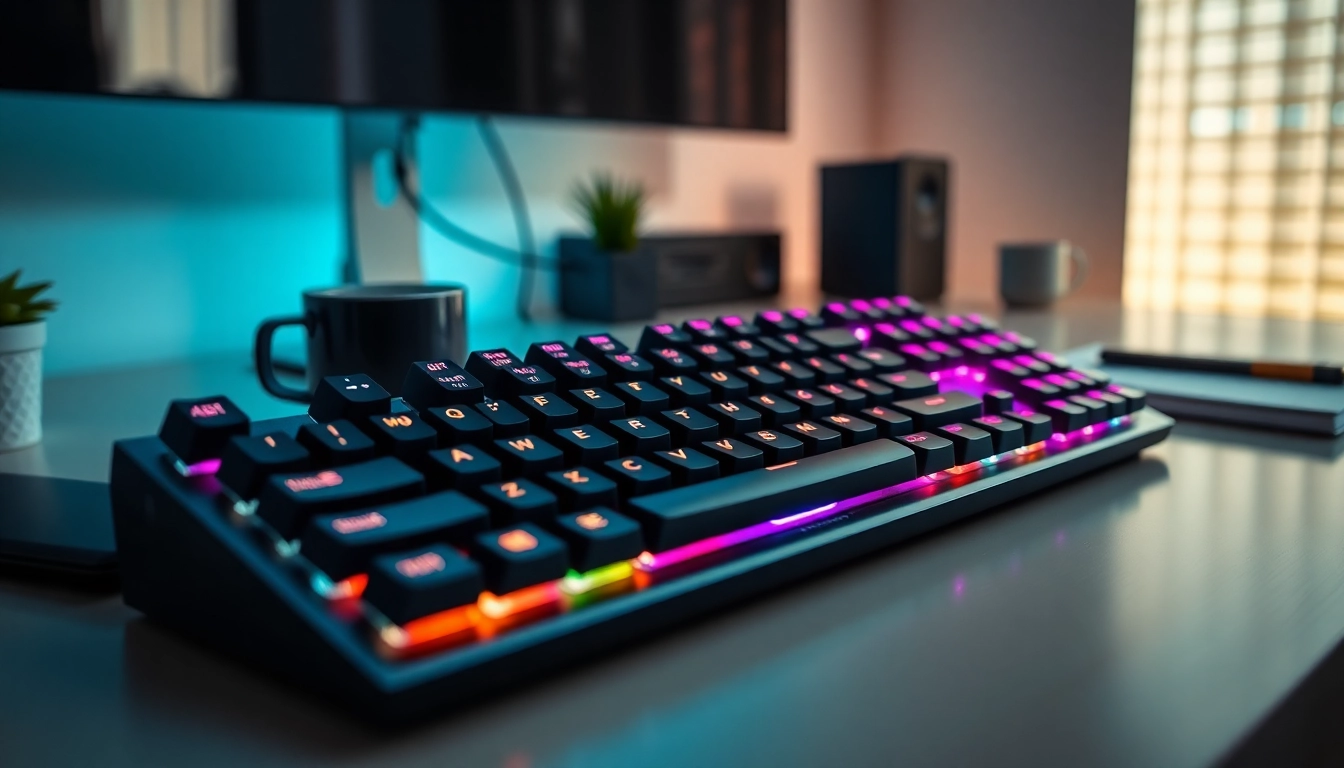Understanding Types of Keyboards
Keyboards are essential devices used for input on computers and other electronic devices. They come in various types, each designed with specific functionalities and user preferences in mind. Whether you’re a gamer, a typist, or an everyday computer user, understanding the different types of keyboards can significantly enhance your experience and productivity. At times, selecting the right Keyboard may seem daunting due to the myriad of options available. This guide aims to simplify that process by discussing the various categories of keyboards available on the market, their pros and cons, and uses tailored to different tasks.
Mechanical Keyboards: Pros and Cons
Mechanical keyboards are recognized for their tactile feedback and durability, which make them a favorite among gamers and professionals alike. The keys on a mechanical keyboard are equipped with individual switches, providing a distinct click with each keystroke to enhance the typing experience.
- Pros:
- Tactile Feedback: The distinct click helps to confirm keystrokes, reducing typing errors.
- Durability: Mechanical switches can withstand millions of keystrokes, making them long-lasting.
- Customizability: Many mechanical keyboards allow users to customize key switches and keycaps for a personalized feel.
- Cons:
- Price: They tend to be more expensive than membrane keyboards.
- Noise: The audible click can be distracting in quiet environments.
- Weight: Mechanical keyboards are generally heavier, which can limit portability.
Membrane vs. Rubber Dome Keyboards
Membrane and rubber dome keyboards use a different mechanism than mechanical keyboards. These keyboards consist of a flat surface with pressure pads that register key presses when they are pushed down.
- Membrane Keyboards:
- Performance: They offer a quieter typing experience and are suitable for basic tasks.
- Price: Typically less expensive, making them a cost-effective choice for many users.
- Rubber Dome Keyboards:
- Feel: They provide a softer key feel, which can be comfortable for prolonged use.
- Durability: Less durable than mechanical options, often resulting in quicker wear and tear.
Specialized Keyboards for Different Uses
Specialized keyboards cater to specific tasks, enhancing productivity and usability for particular professions or hobbies.
- Gaming Keyboards: These often feature customizable RGB lighting, dedicated macro keys, and high polling rates to improve gameplay.
- Ergonomic Keyboards: Designed to reduce strain and improve comfort, they often have a split design and adjustable height.
- Compact Keyboards: Ideal for those with limited desk space, these keyboards minimize size while maintaining essential functionalities.
Key Features to Consider When Buying a Keyboard
When selecting a keyboard, various features should guide your decision-making process. Focusing on the switch types, layout, ergonomic design, and connection options can optimize your overall experience.
Switch Types and Their Impact on Performance
Switch types directly affect typing experience and keyboard performance. The three main switch categories include:
- Linear Switches: These provide smooth keystrokes without any tactile feedback or noise, ideal for gaming.
- Tactile Switches: Offering noticeable feedback, these are perfect for typists who want a responsive experience.
- Clicky Switches: These produce an audible click sound upon keystroke, providing both tactile and auditory feedback.
Keyboard Layouts and Ergonomics
Keyboard layout can vary based on regional preferences and intended use. Common layouts include QWERTY, AZERTY, and Dvorak. Ergonomics plays a significant role as well; purchasing a keyboard that fits the natural curve of your hands can prevent discomfort during extended use.
Wired vs. Wireless Connectivity Options
Both wired and wireless keyboards have their advantages and disadvantages:
- Wired Keyboards: Generally provide faster response times and do not require batteries.
- Wireless Keyboards: Offer increased mobility and reduced clutter but may require charging or battery replacements.
Setting Up Your Keyboard for Optimal Use
Once you’ve selected your ideal keyboard, setting it up correctly can enhance productivity and comfort. Customizing configurations is integral to maximizing your keyboard’s benefits.
Customizing Keybindings for Productivity
Keybinding customization allows users to assign specific functions to keys, enhancing workflow. This feature is particularly beneficial for gamers and professionals who rely on consistent shortcuts.
Adjusting Backlighting for Comfort
For those who work in low-light conditions, backlit keys can significantly improve visibility. Many modern keyboards offer adjustable backlighting options, allowing users to set their preferred brightness levels.
Maintenance Tips for Longevity
Maintaining your keyboard is crucial for its longevity. Regular cleaning, avoiding spills, and using keyboard covers can keep your keyboard in optimal working condition.
Popular Keyboard Accessories You Might Need
Accessorizing your keyboard can improve functionality and comfort. Below are some of the most popular accessories worth considering:
Keycaps and Switch Modifications
Custom keycaps can personalize your keyboard and improve tactile feedback. Some enthusiasts even opt for switch modifications, enhancing performance and responsiveness tailored to their typing style.
Mouse and Keyboard Combination Sets
Buying a mouse and keyboard combination set can be beneficial for aesthetic and functional coherence. Many combination sets come optimized for seamless operation between the two devices.
Keyboard Stands and Wrist Rests
Investing in a keyboard stand or wrist rest can significantly enhance comfort, especially during long typing sessions. These accessories promote good posture and reduce the risk of strain-related injuries.
Future Trends in Keyboard Technology
The keyboard industry continues to evolve rapidly, driven by technological advancements and changing user needs. Understanding upcoming trends can inform future keyboard purchases.
Innovations in Gaming Keyboards
Gamers are likely to see advancements in switch technology, customizable RGB features, and enhanced wireless capabilities that push performance boundaries further than ever.
The Rise of Custom Mechanical Keyboards
Custom mechanical keyboards are gaining popularity as enthusiasts explore unique configurations and aesthetics, allowing for personal expression and tailored performance.
Smart Keyboards and Integrated Features
As technology progresses, smart keyboards that integrate features like voice recognition, programmable displays, and even built-in trackpads are becoming increasingly common, catering to the demands of modern users.
